THE THEATRE ORGAN
PART TWO: BUILDERS OF THE THEATRE ORGANS
THIS PAGE IS WRITTEN IN CONJUNCTION WITH GLEN TWAMLEY (FRIENDS OF BEER WURLITZER)
-oOo-
……… Speaking of Stops etc ……. it goes to show how the Theatre Organ Builders could, by means of an elaborate Console with many Stop Keys, fool the public into thinking the Organ was so much larger than it really was. Those small Comptons, the 2/4’s and 2/5’s, only had a couple of hundred pipes and were so very much smaller than the average Parish Church instrument.
PB
-oOo-
THE COMPTON THEATRE ORGAN
DEDICATION
Before beginning to write The Compton Story, I would like readers to take note of Mr. Ivor Buckingham. Were it not for his diligent work, I would not have been able to write this piece. He collected together information on the organs produced by The John Compton Organ Company Limited and immersed himself in producing a detailed report on the Theatre Organs built. His research led to the production of The Compton List, without which I would know little of these remarkable instruments.
It is with much pleasure and grateful thanks that I dedicate this piece to the memory of Mr. Ivor Buckingham.
-oOo-
PAGE TWENTY-SEVEN:
THE COMPTON THEATRE ORGAN
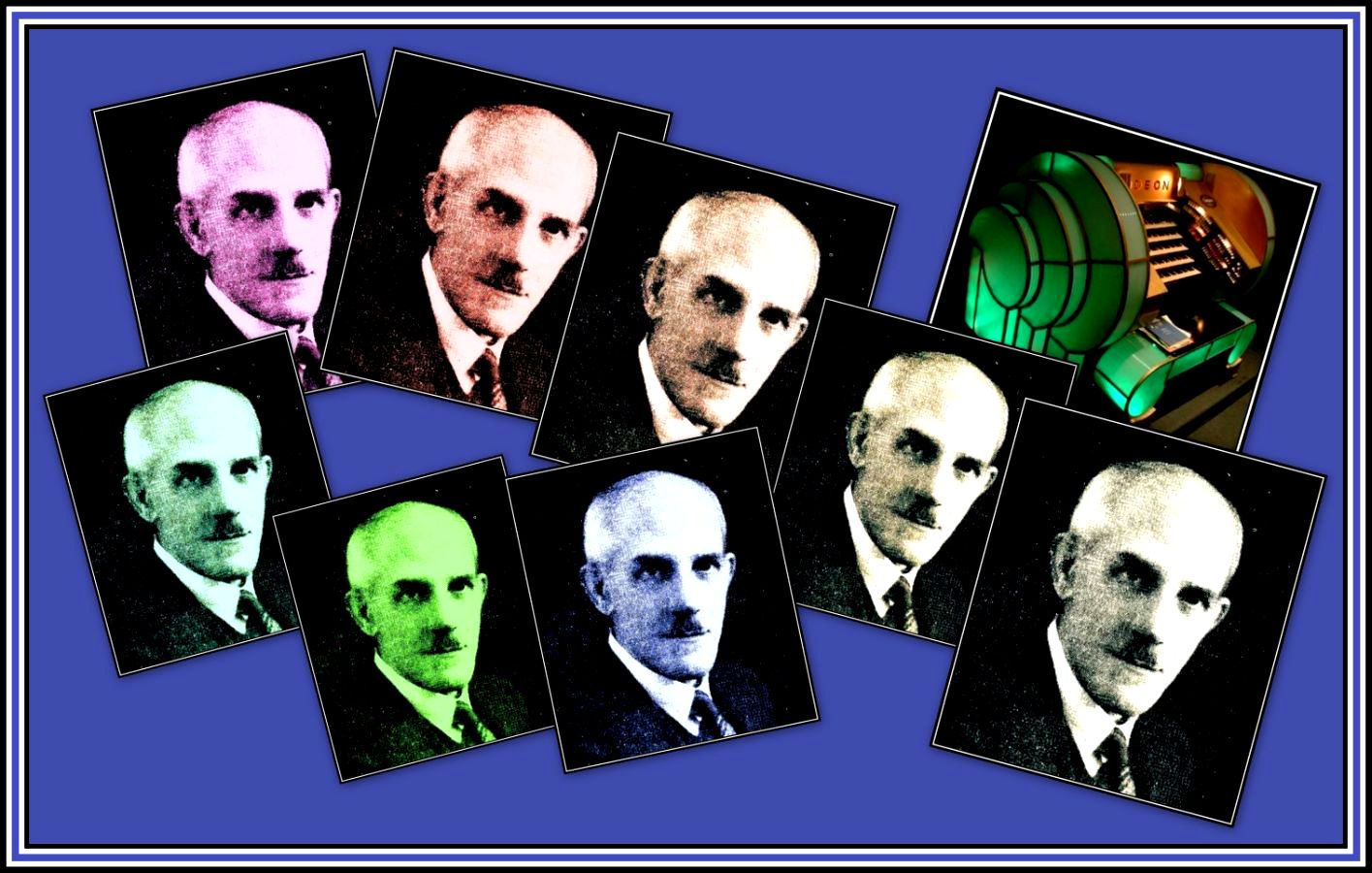 John Compton, Pioneer, Innovator and Organ Builder
John Compton, Pioneer, Innovator and Organ Builder
John Compton (1876-1957) was born in Newton Burgoland in Leicestershire. After leaving school, he was apprenticed to a Pipe Organ builder in Birmingham. Once he completed his apprenticeship, he went to work with a company in Sheffield where he learned further aspects of the trade. He went on to become, in my opinion, an Organ Builder par excellence.
-oOo-
THE ORGAN BUILDER
In 1901, Robert Hope-Jones (1859-1914) attempted to enlist Mr. Compton as a manager of one of his factories, but he refused the offer, preferring to enter into business with a partner to build Church Organs.
Although John Compton, was primarily a Church Organ builder, he evidently saw a potential market in supplying organs to cinemas and theatres. Most early organs supplied to such places were modified straight organs with added percussion effects. Eventually The John Compton Company Limited, by use of the Unit Extension System, was able to build more suitable and versatile instruments financially within reach of cinema owners of the time.
in 1909, The Company installed a Harper Player Piano at the Palace Cinema Tamworth. This instrument played piano rolls and was electrically connected to six ranks of organ of pipes thereby producing the world’s first Photoplayer. By 1912, The Company was now well established in Nottingham and had earned a good reputation.
After the First World War, The Company expanded and opened a factory in West London. By 1930, it built a large factory in Willesden, where most of its Theatre Organs were built.
During the 1920s, Theatre Organs were being installed in Picture Houses in increasing numbers in addition to the small orchestras already in place to accompany the silent films being screened. Once a Theatre Organ was installed, its versatility was quickly recognised. Its ability to reproduce the sounds of a variety of instruments and effects soon led to a reduction in the number of musicians being employed leading to the eventual demise of many small cinema orchestras.
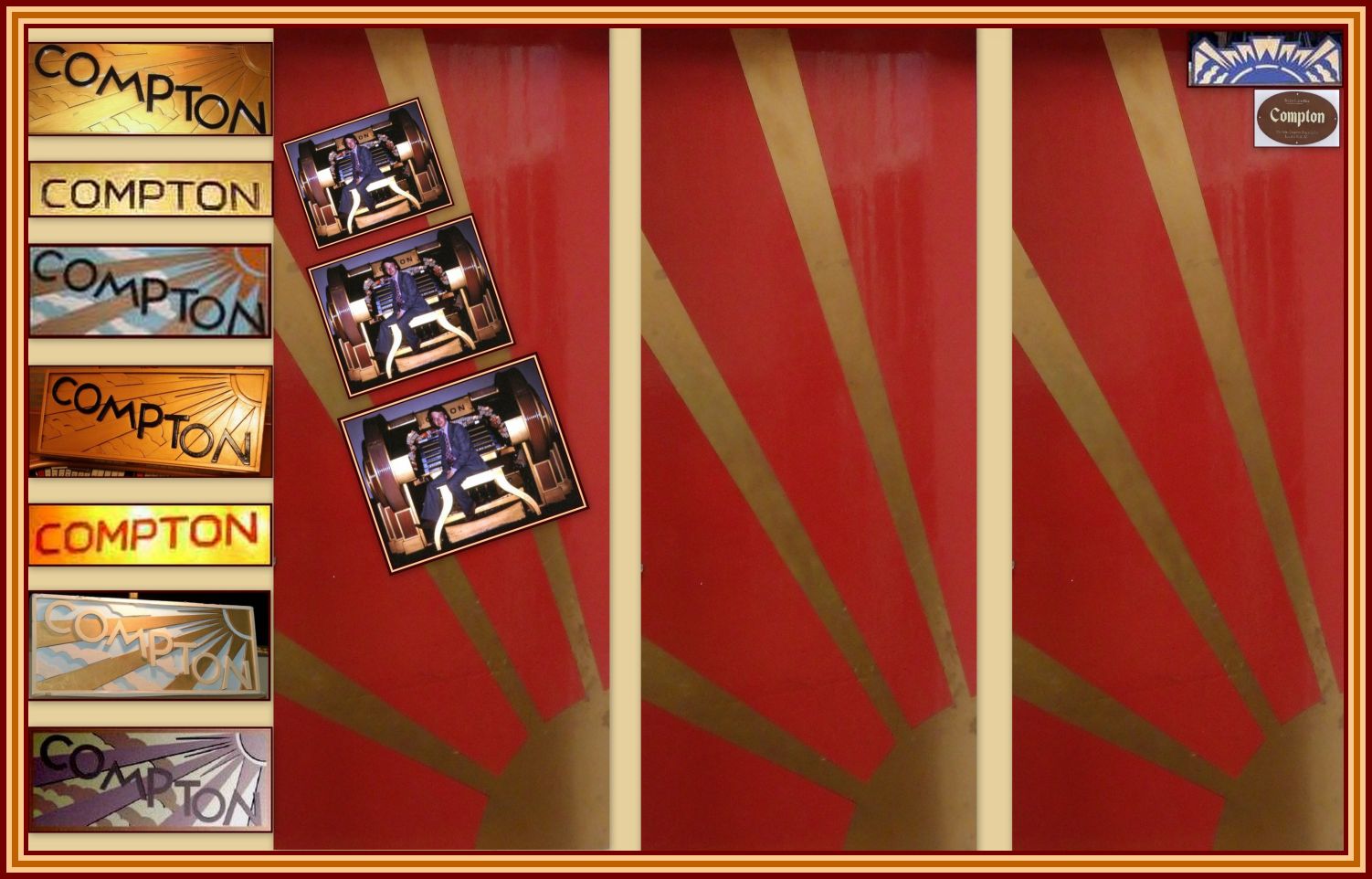 Logos of The Compton Theatre Organ Company
Logos of The Compton Theatre Organ Company
Featuring Andrew Gilbert at the Console of the Duchess (the Organ of the Odeon Leicester Square).
The photograph was taken by Ms Andrea Easton Gilbert
In 1923, The Company received an important order to build an organ to be installed in the Shepherds Bush Pavilion, a prestigious cinema then under construction by The Davis Family. This cinema was designed by Frank T. Verity, the cinema architect, and was awarded the RIBA (Royal Institute of British Architects) London Street Architecture Award for the Best London Facade. At the time of its opening, there was a full Pavilion Symphony Orchestra in place and a sophisticated lighting system to create colour effects during the screening of films. The cinema had seating for 2,000 patrons and had two miles of carpeting and solid silver lamps.
The Shepherds Bush Pavilion was damaged in July 1944 when it was hit by a flying bomb.
Photographs shown, moving clockwise and from Top Left: when reopened in 1955 as a Gaumont Cinema; renamed as an Odeon Cinema in 1962 and part of the building
was converted into a Top Rank Bingo Club which opened in 1970;
closed as a cinema in 1983 and as a Mecca Bingo Club in 2001 and left empty until 2009;
and converted into a hotel, which opened in May 2014, as The Dorsett Hotel
Although the organ, as originally installed at the Shepherds Bush Pavilion was very much a Concert Organ of 4-manuals and 17-ranks, a number of additions were made to it in 1931 along with the replacement of its Console with one of a more modern design, to create an improved instrument of 4-manuals and 19-ranks. The Console style chosen for the replacement proved popular and became known as the Gaumont Style since it was used as the design of a number of Consoles of organs installed in Gaumont Cinemas until 1934.
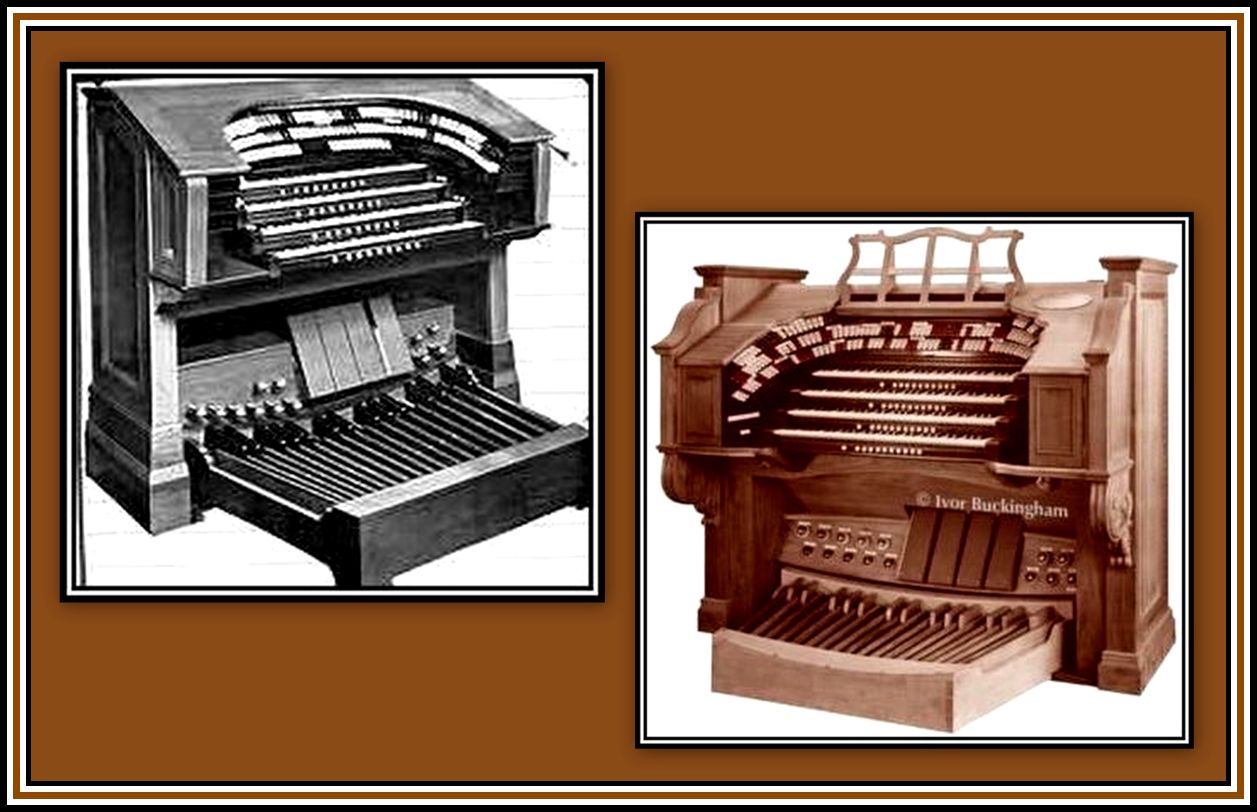 (Left) The Original Console of The Compton Theatre Organ of the Shepherds Bush Pavilion
(Left) The Original Console of The Compton Theatre Organ of the Shepherds Bush Pavilion
This reproduction appears with permission of Ian McIver;
(Right): The Replacement Console of the Organ; this reproduction appears with permission of Stephen Dutfield (now responsible for The Compton List)
Follow the link to hear Quentin Maclean at the Compton Organ of the Shepherds Bush Pavilion
-oOo-
John Compton was responsible for numerous significant developments in Organ Building holding a number of patents for acoustic and electrical innovations. Many of his instruments were comparatively small in size yet proved to be an excellent fit, both musically and technically, for the average British cinema auditorium.
The difference in sound of Organs from various builders (Wurlitzer, Christie & Compton) was partly a result of variations in construction and voicing of the Tibia Clausa. The Wurlitzer Organ Company made this rank of wood while Compton made it of metal. However, Compton did make a few organs with wooden Tibias, one such organ being that of the Paramount Cinema Birmingham.
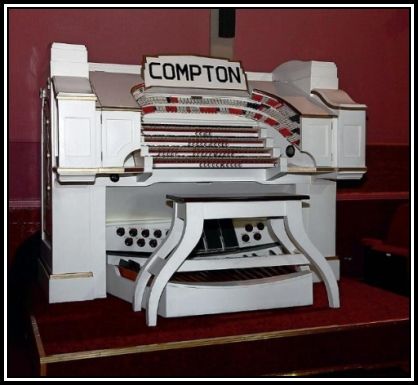 The Compton Theatre Organ once installed at the Paramount Cinema Birmingham and now installed at the Penistone Paramount Cinema
The Compton Theatre Organ once installed at the Paramount Cinema Birmingham and now installed at the Penistone Paramount Cinema
This photograph appears in Yorkshire Life
Click here to see and hear the Organ while still at the former Paramount Cinema Birmingham
-oOo-
The Paramount Corporation operated a small number of cinemas in the U.K. between 1926 and 1939. The Company built Paramounts at Leeds, Newcastle and Manchester and installed Wurlitzer Theatre Organs in them, as it had at its London flagship cinema, the Plaza Cinema on Regent Street,. The Company also operated the Carlton Theatre/Cinema Haymarket, but no Theatre Organ was installed here.
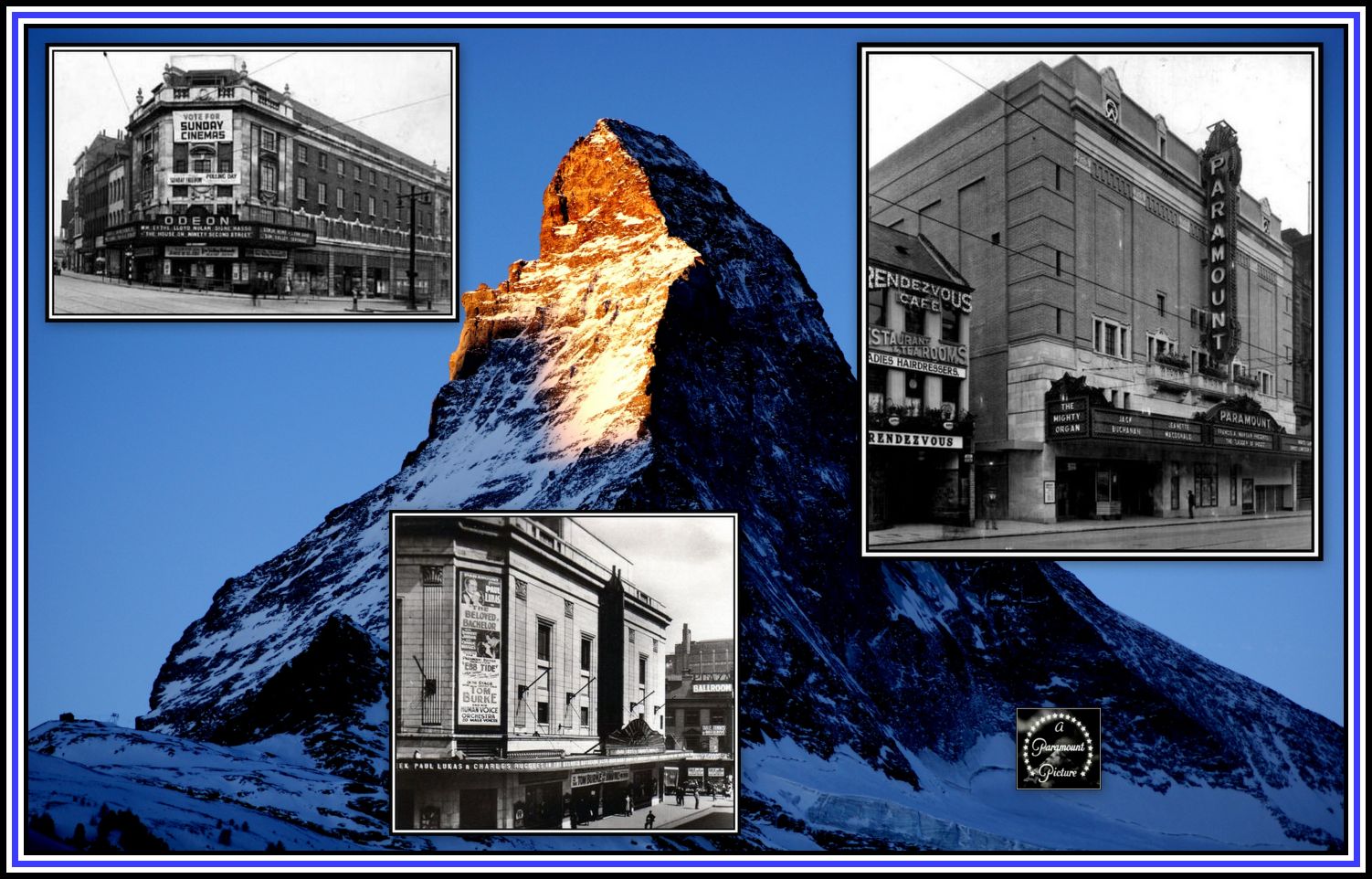 The Paramount Cinemas at (Top Left) Leeds, (Top Right) Newcastle & (Bottom) Manchester
The Paramount Cinemas at (Top Left) Leeds, (Top Right) Newcastle & (Bottom) Manchester
In 1937, Paramount contracted The Company to build organs for four Super Cinemas that Frank T. Verity and Samuel Beverley were building in Liverpool, Glasgow, Birmingham and London (on Tottenham Court Road). Paramount insisted that these organs be built to a standard to rival those of the Wurlitzer Organ Company. For this contract, John Compton designed the Paramount Style Console, which was built and then installed in these cinemas.
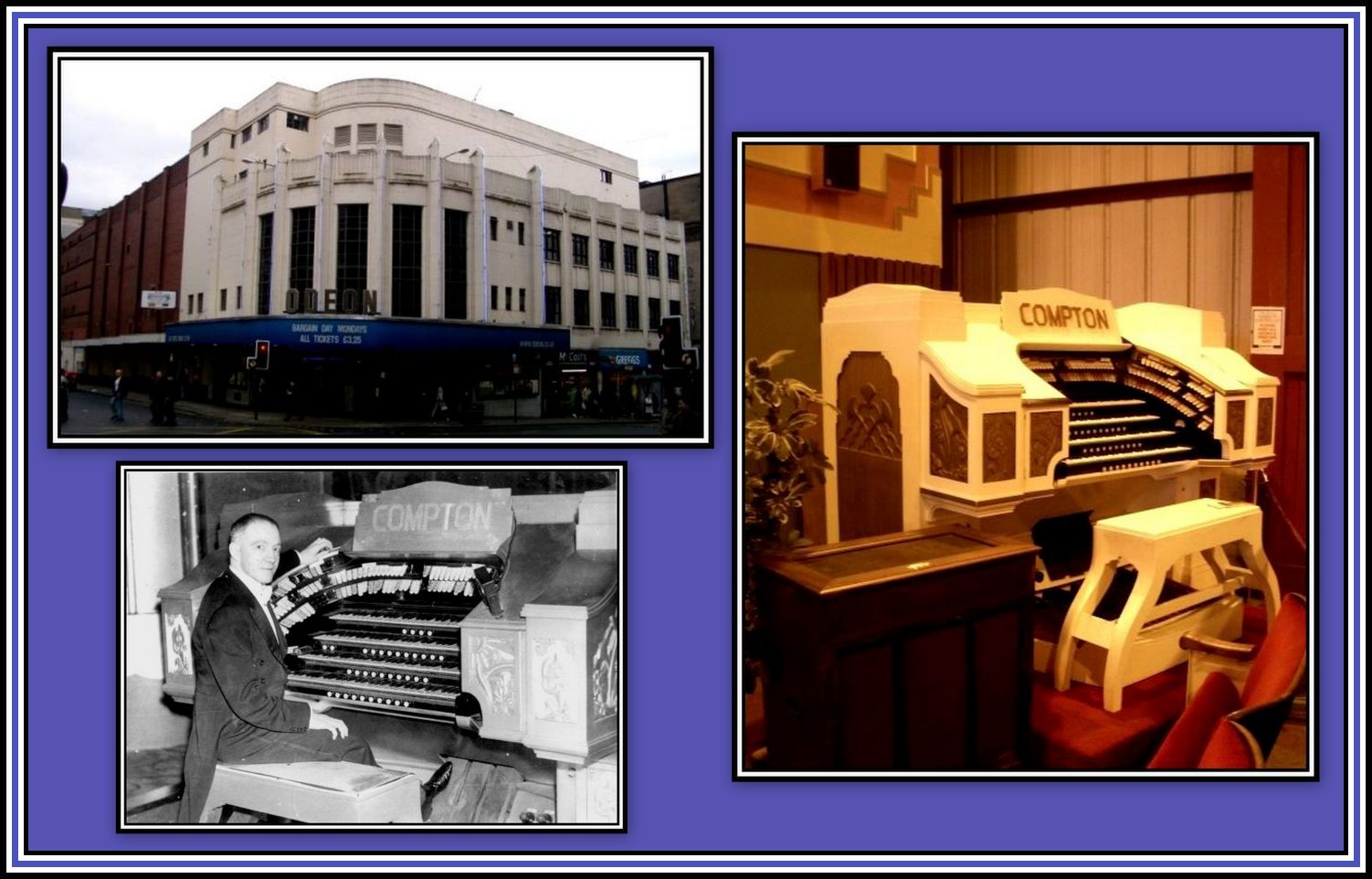 Top Left: The Former Paramount Cinema Glasgow
Top Left: The Former Paramount Cinema Glasgow
Bottom Left: The Compton Theatre Organ with Lyndon Laird at the Console
Right: The Console of The Organ at the Museum of Scottish Industrial Life
Images courtesy of Gary Painter/Frank Watson/Scottish Cinema Organ Trust
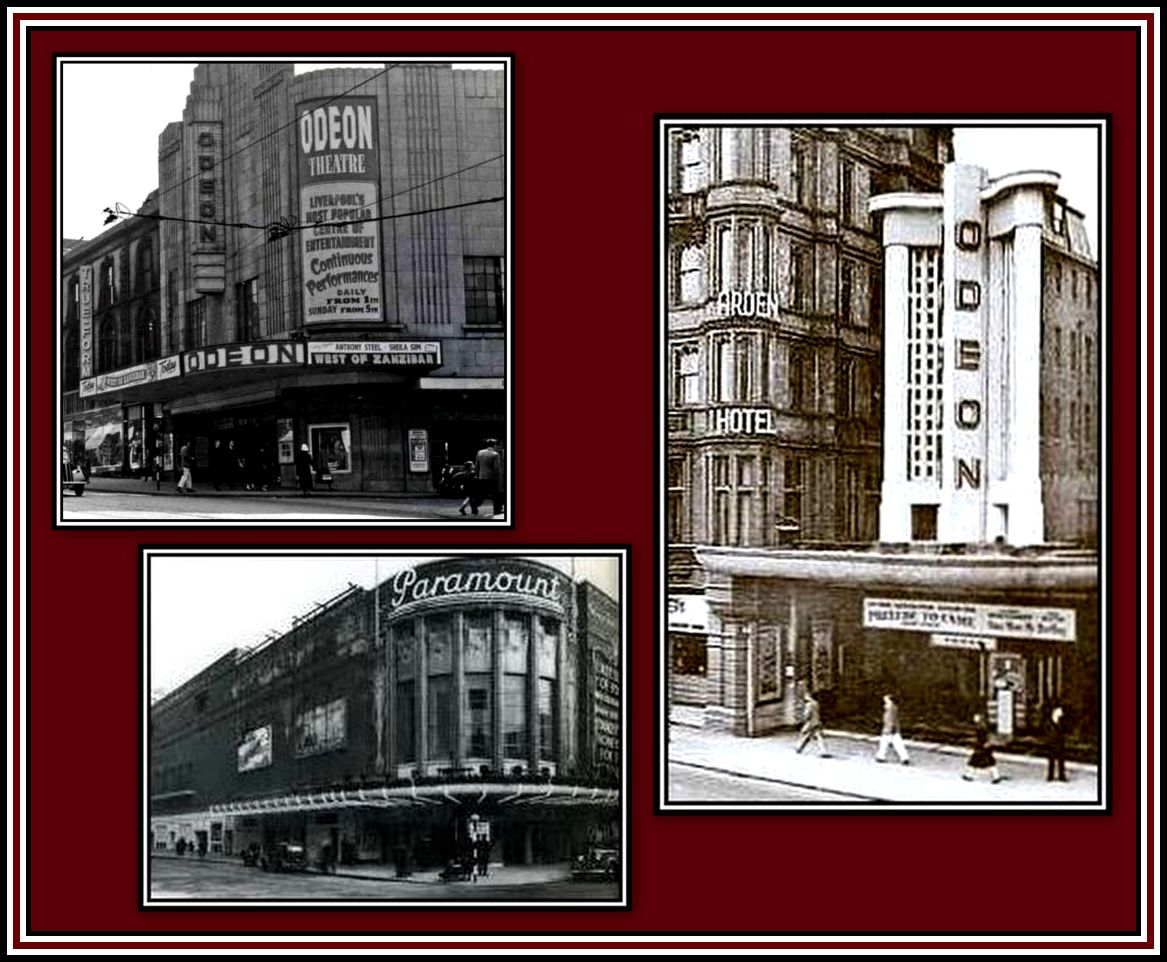 The Paramount Cinemas at (Top Left) Liverpool, (Bottom Left) Tottenham Court Road & (Right) Birmingham, which is the only cinema still screening films
The Paramount Cinemas at (Top Left) Liverpool, (Bottom Left) Tottenham Court Road & (Right) Birmingham, which is the only cinema still screening films
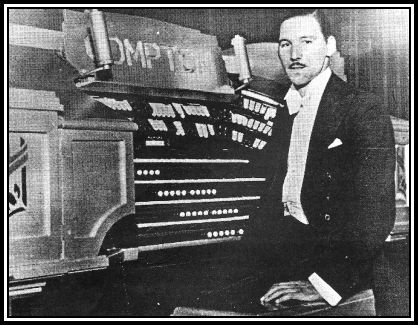 Al Bollingham at The Console of The Compton Theatre Organ of the Paramount Tottenham Court Road
Al Bollingham at The Console of The Compton Theatre Organ of the Paramount Tottenham Court Road
This photograph was provided by Paul Bland
-oOo-
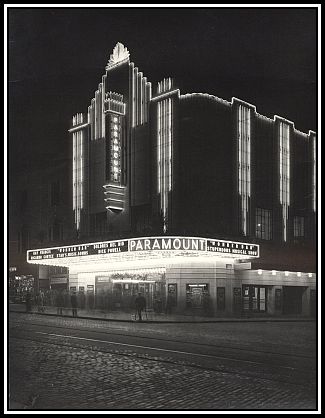 The Paramount Cinema Liverpool
The Paramount Cinema Liverpool
This photograph was provided by Philip Mayer and is the property of the Liverpool Record Office
-oOo-
The Company was also contracted to build Theatre Organs for other prestigious venues in addition to the Shepherds Bush Pavilion. These included the Theatre Royal Dublin and the Odeon Theatre Leicester Square. In addition, The Company was asked to build an Organ for the BBC, which unfortunately was destroyed during the Second World War. The Organ built for installation at the Odeon Theatre Leicester Square was to be the only Theatre Organ to be built with 5-manuals and is still present in the cinema.
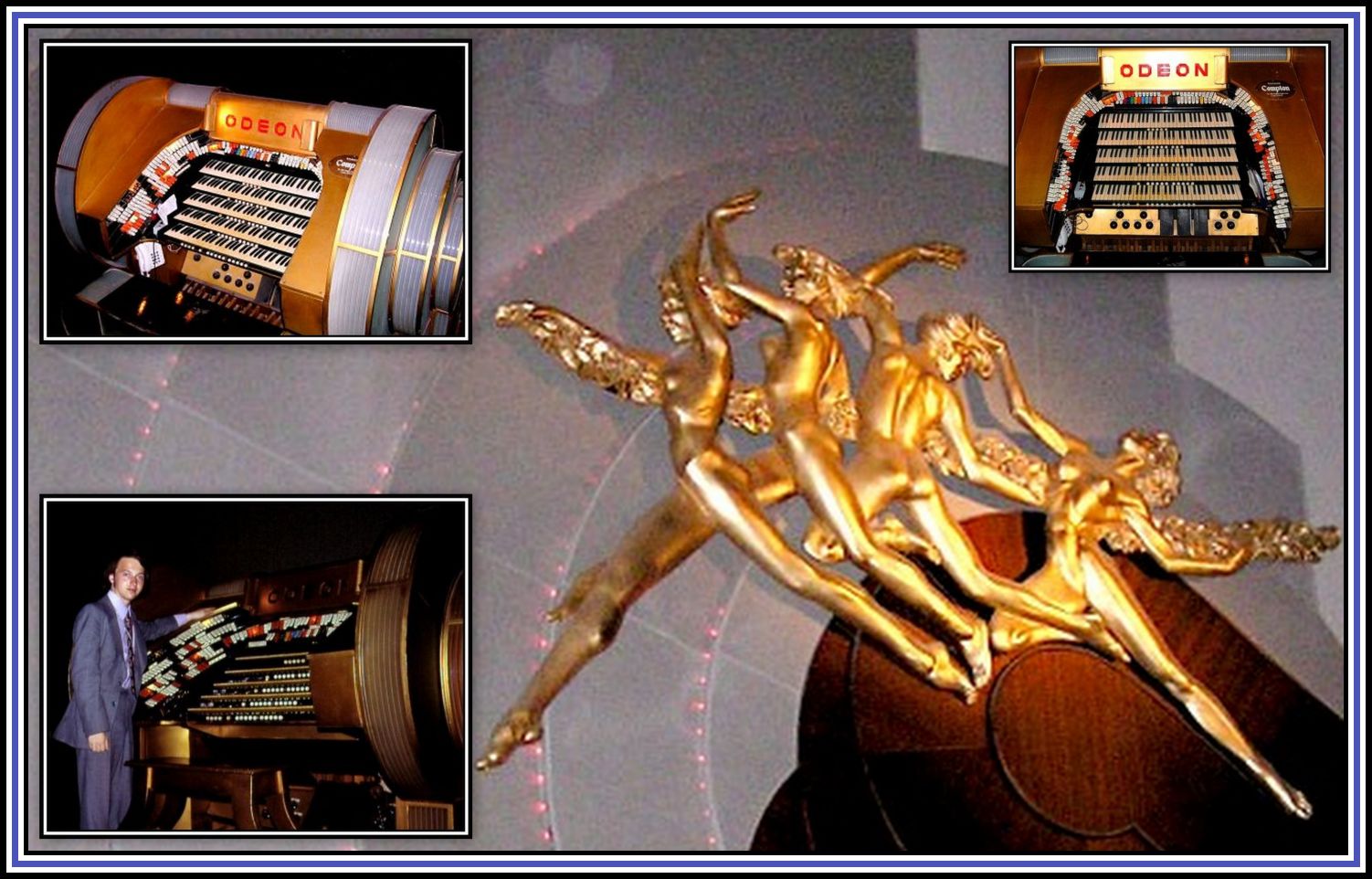 The Compton Theatre Organ of the Odeon Leicester Square (The Duchess)
The Compton Theatre Organ of the Odeon Leicester Square (The Duchess)
Bottom Left: Andrew Gilbert at the Organ; this photograph was taken by Ms Andrea Easton Gilbert
Click here to see and hear Donald MacKenzie play and discuss the Organ
-oOo-
INNOVATIONS – SOLO CELLOS & MELOTONES
John Compton was responsible for inventing the Solo Cello, a device intended to replicate the string instrument. It was first installed in the Theatre Organ (3-manuals, 10-ranks) destined) for the Ritz Cinema New Southgate in December 1933.
The Solo Cello was in fact one string that was played (i.e. bowed) by a rotating resin wheel. With the depression of a console key, the wheel touched the single string and caused it to vibrate. The vibrating string was made to produce the required note (i.e. at the desired harmonic point) when one of a number of small mechanical fingers applied pressure to it. A small current was applied to the string enabled the vibrations to be collected by an electromagnetic pick-up (i.e. in a system similar to that employed by a modern electric guitar). The action of collecting this vibration within the electromagnetic field of the pick-up created a small voltage, which was fed to an amplifier and converted to a sound. The sound, when fed to a horn loudspeaker could, as a result, could be heard.
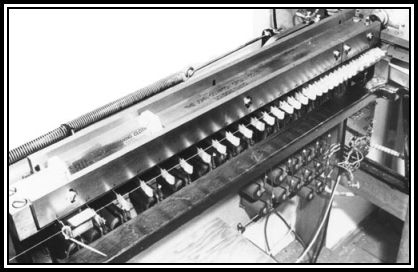 The Solo Cello of the Compton Organ of the Dreamland Cinema Margate
The Solo Cello of the Compton Organ of the Dreamland Cinema Margate
This photograph was provided by Paul Bland
Many organists disliked the sound produced by the Solo Cello, which may help explain why it was discontinued after only twenty organs were built containing this device. Also, as a fairly complex mechanism, it could be unreliable and did not always function as required.
Click here to hear a demonstration of the Solo Cello
The final Solo Cello included with an Organ was with the one (4-manuals, 16-ranks) installed at the Theatre Royal Dublin in September 1935.
In 1932, another innovation was introduced by Compton. Leslie Bourn, a technician at the Company, developed a system whereby an audio signal was generated from waveforms engraved in a conductive plate by the use of rotating discs. This discovery formed the basis of what would lead to the development of an early form of Electronic Organ. The Electrical Unit became known as The Melotone and was incorporated into a total of seventy-four Compton Organs built between 1935 and 1939 and played by the organist, as if it were an additional Rank.
-oOo-
The following information about the Lyric Cinema Wellingborough and its Compton Theatre Organ was provided by a reader:
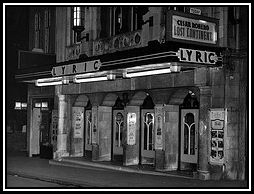 The Lyric Cinema Wellingborough
The Lyric Cinema Wellingborough
This photograph appears on Cinema Treasures
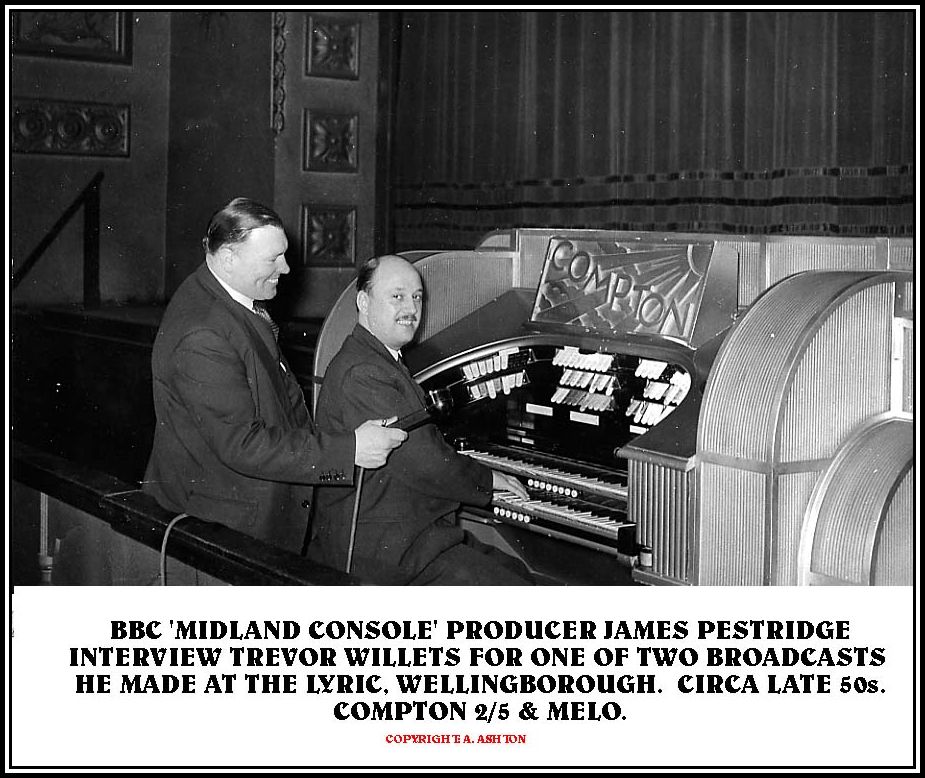 Trevor Willets playing Smoke Gets in Your Eyes on The Compton Theatre Organ of the Lyric Cinema Wellingborough (2-manuals, 5-ranks & Melotone)
Trevor Willets playing Smoke Gets in Your Eyes on The Compton Theatre Organ of the Lyric Cinema Wellingborough (2-manuals, 5-ranks & Melotone)
This photograph is © FROM THE ALAN ASHTON COLLECTION and appears with permission
The Melotone Unit heard here was later removed and installed with the erstwhile Organ of the Paramount Cinema Glasgow since its original Unit had been lost, but was later sold and exported to the U.S.A.
-oOo-
The Compton Theatre Organ of the Lyric Cinema Wellingborough was removed and installed at the Wellingborough Technical Grammar School (which was later renamed as Weavers School and the Weavers Academy). The Console Case had been built with Illuminated Side Pillars (see PART 2: COLOURFUL CONSOLE CASES), but these were discarded after its removal from the cinema and replaced by mahogany-coloured board.
While installed at the School, the Console Rails retained the Stop Keys for controlling the illumination via its original Electro-Mechanical Dimmer Device. The decision was made to install the Fader Unit to one side of the stage, re-connect it to the Stop Keys, but instead of controlling the lights within the illuminated surround (by now, discarded), it was linked to one of the stage lighting rails suspended from the Hall ceiling, and thus to a number of stage spotlights. With appropriate gels to match the Stop Keys, an organist could then recreate something akin to an Illuminated Console, albeit via the overhead stage lighting.
-oOo-
I met Reginald Dixon when he came to play the Compton at Wellingborough. He was a charming, friendly man who spent time afterwards, signing autographs and talking to members of the audience.
The programme also includes details of the organ as installed at the school. At this time the Melotone was fully operational. In later years it became inoperative. I have this programme in my collection; the autograph is genuine, not printed on.
I also attach a page from Dr Tootell’s work on the cinema organ, published in the 1920s, simply to establish my point about the organ having been written about for many years.
-oOo-
The School has since sold the Organ to the Cannock Chase Organ Club who modified it (i.e. removed the Melotone Unit, added a couple of ranks and restored the Console) and installed it in Bilston Town Hall. The Melotone Unit was removed and has been transported to the U.S. for inclusion in the Compton Organ formerly of the Paramount Cinema Glasgow.
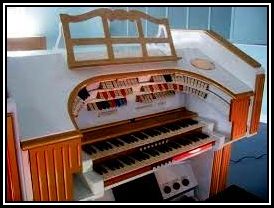 After refurbishment and now at Bilston Town Hall
After refurbishment and now at Bilston Town Hall
The musical interlude and information here were provided by Paul Bland.
-oOo-
Melotone Units were installed within the organ chamber and connected to the Console. Its sounds could be selected via ordinary Stop Keys allowing the organist to add sounds, as required. The Unit could be switched on or off separately from the rest of the organ thereby giving the organist the choice to use it or not.
As The Melotone was not a complete instrument in itself, it did not need to offer a wide variety of tone colours or a realistic imitation of organ sounds. It was a novel and ethereal voice, unashamedly synthetic in character that contrasted with the familiar pipe tones of the organ.
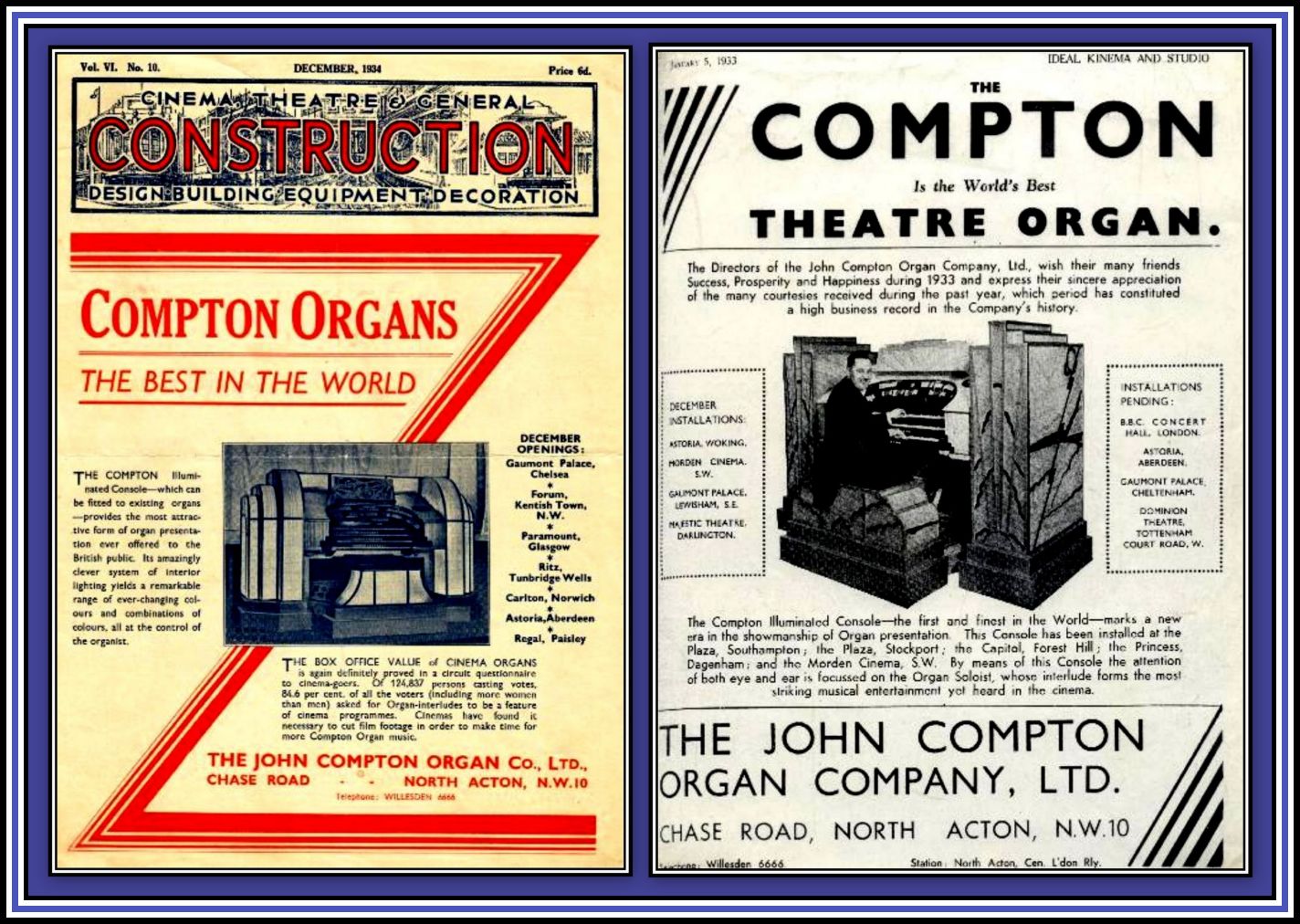 These pictures were provided by Paul Bland
These pictures were provided by Paul Bland
Al Bollingham playing a Compton Organ fitted with a Melotone
-oOo-
The first Melotone Unit included in an Organ (3-manuals, 10-ranks) was that installed at the Forum Southampton in June 1935 and the final one with the Organ (3-manuals, 5-ranks) installed in the Plaza Cinema Crosby
-oOo-
The Company developed The Melotone further into a stand-alone-organ and a number were produced for sale in the U.K. Those that were installed in cinemas were called The Theatrone and those in churches, The Electrone.
For more on these organs, please follow the link to the Electrokinetica – The Electro-Mechanical Museum Website
Click here to hear and see a demonstration of The Melotone
Click here to hear and see the BBC Compton Electrone once installed at the Maida Vale Studios
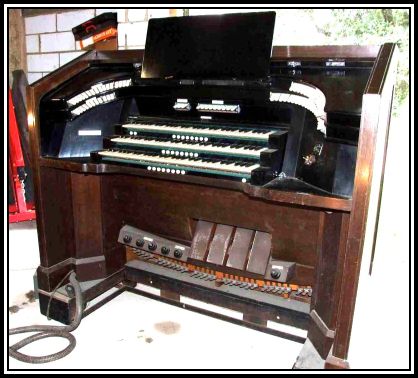 The BBC Compton Electrone in the process of being restored
The BBC Compton Electrone in the process of being restored
This photograph appears here with permission of Pat Dunham
-oOo-
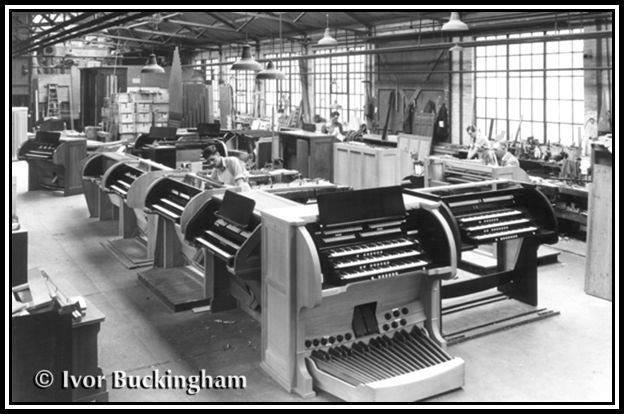 The Console Shop of The John Compton Organ Company in 1952 showing a number of Electrones and a possible Melotone
The Console Shop of The John Compton Organ Company in 1952 showing a number of Electrones and a possible Melotone
The photograph appears here with permission of Stephen Dutfield (The Compton List)
-oOo-
The John Compton Organ Company built a total of 261 Theatre Organs that were installed in cinemas and theatres in Britain. The final new Theatre Organ that The Company built was opened to the public on 2nd September, 1939, at the Plaza Cinema Crosby.
This photograph was taken by George
In addition, The Company built a number of Church and Concert Organs. The Company employed a number of talented people who worked diligently and led to it being awarded a number of patents in Organ mechanisms, as well as for electronic and electrical inventions. In 1940,
Mr. Compton was on holiday on The Isle of Capri when he was arrested. He was to spend time as an enemy alien in a prison camp as a result. While here, he worked on the restoration of a number of pipe organs before being released and allowed to return to England.
John Compton died in 1957 and The Company was then led by his colleague, James Issac Taylor who unfortunately died soon afterwards in 1958.
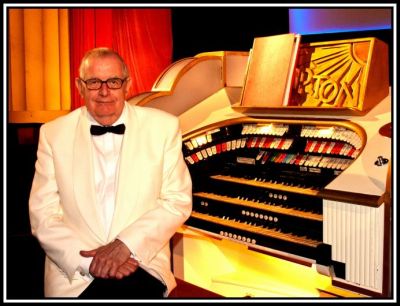 Mr. Frank Fowler, the last Managering Director of The Company, at the Console of the Theatre Organ installed at the Odeon Theatre Weston Super Mare
Mr. Frank Fowler, the last Managering Director of The Company, at the Console of the Theatre Organ installed at the Odeon Theatre Weston Super Mare
With the decreasing demand for both Theatre and Pipe Organs, this side of The Company became less important. It was sold in 1964 to Rushworth & Dreaper Limited, who focused of the production of Electrone Organs. Unfortunately, this company went on to declare bankruptcy and production was taken over by Hirel Electronic Developments Limited and renamed Compton Organs Limited. Eventually, what remained of The Company was acquired by Johannus, a Dutch Organ Builder and all production moved to The Netherlands.
Today, a small number of The Company’s Theatre Organs are still present in their original installations. The history of some these Theatre Organs will be detailed later in this series and will include those of the Odeon Theatre Leicester Square (5-manuals, 17-ranks), the Plaza Cinema Stockport (3-manuals, 11-ranks) and the Odeon Theatre Weston Super Mare (3-manuals, 6-ranks).
——oooOOOooo——
Click here
to watch the video made by Mr. Paul Kirner,
MERSEYSIDE TO RHONDDA,
which follows the transport of the erstwhile Theatre Organ of the
Regal Cinema Edmonton from its place of storage to
PAUL KIRNER’S MUSIC PALACE
at Ynyshir in the Rhondda Valley
——oooOOOooo——
——oooOOOooo——
ACKNOWLEDGEMENTS
I would like to thank Mr. Ian McIver for providing information and photographs. I would also like to thank Mr. Stephen Dutfield for allowing the reproduction of some photographs from The Compton List here.
I would like to thank Mr. Fred Smedley of the West of England Theatre Organ Society for providing the photograph of Mr. Frank Fowler.
Thanks are given to Mr. Pat Dunham for allowing the photograph of the BBC Compton Electrone.
Very special thanks are given to Mr. Paul Bland for providing photographs, musical interludes and information and without whom this piece would not have been possible.
I would like to thank Mr. Alan Ashton for providing a photograph from his collection.
——oooOOOooo——
——oooOOOooo——
——oooOOOooo——
Click here to return to PART ONE: INTRODUCTION TO THE ORGAN
——oooOOOooo——
Click here to return to PART TWO: THE THEATRE ORGAN HOME PAGE
——oooOOOooo——
——oooOOOooo—-

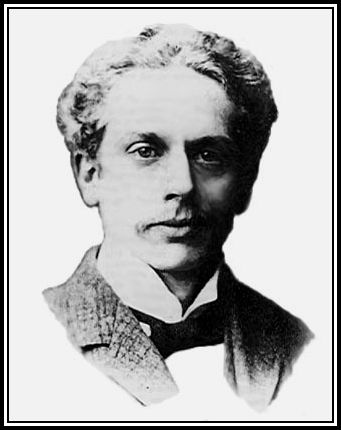
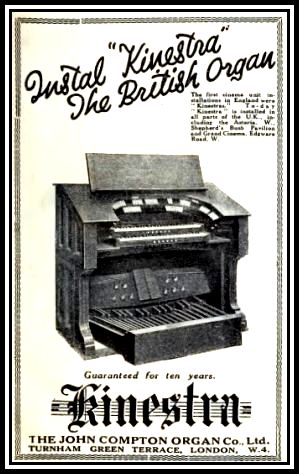
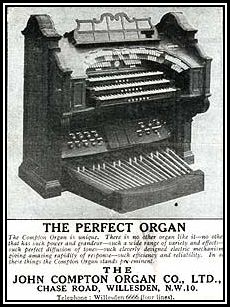
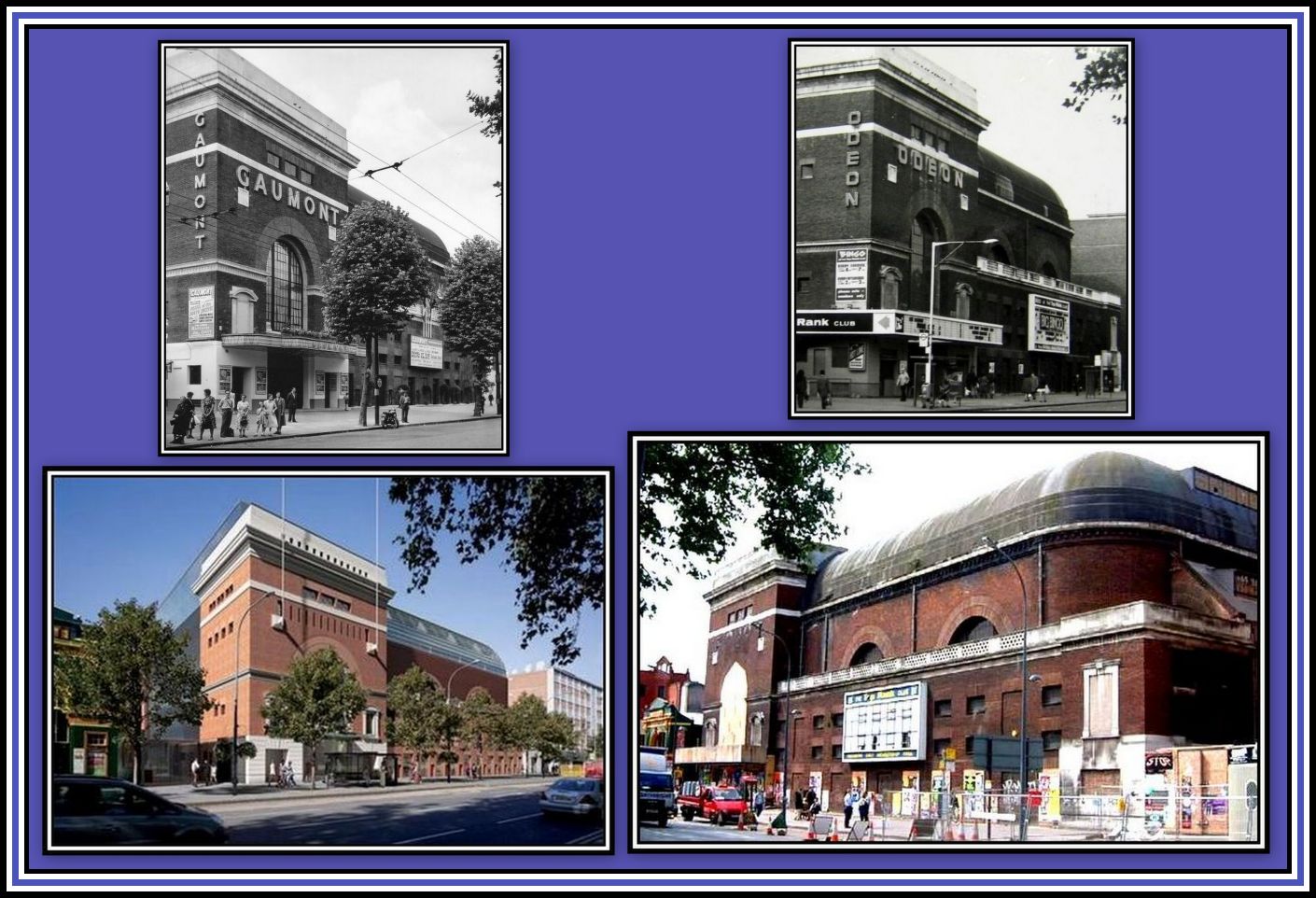
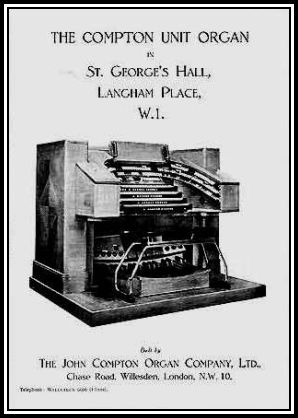
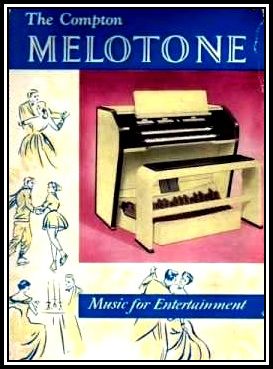
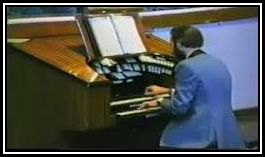
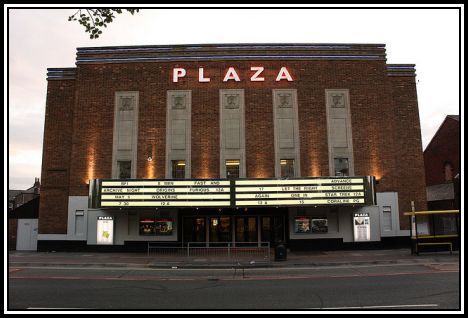
Hello again,
I have just noticed that some ‘kind’ person has provided you with an awful degraded copy which I took of Trevor Willetts and James Pestridge at my old cinema, the Lyric, Wellingborough. I know you will have printed this in good faith, and so if you would like I can provide you with a 100% copy as I am annoyed at people who ‘harvest’ pictures and then pass them on.
Kind regards. Alan Ashton
Mr. Ashton: Thank you for providing me with a good quality copy of the photograph of Trevor Willetts and James Pestridge at the Lyric Cinema Wellingborough. I am grateful to you for it. With regards. Charles
regards to steven dutfield from chris and lilian plaice,great memories of greg davies and the barry christie
Hello!
This is Tim Wagner, from Bloomington, Indiana, USA. Thank you for providing this information on Mr. Compton, his Company and Theatre Organs. Most Interesting! I am currently drafting an article for the American Theatre Organ Society regarding the sole Compton Cinema Organ in the US, and would love to include a photo which appears on this web page, captioned, “The Compton Theatre Organ with Lyndon Laird at the Console”. The photo is credited to Frank Watson. Can you assist me in gettting in contact with Mr. Watson to ask for permission to include this photo in my article and obtain an appropriately sized digital file of the photo?
Thank you kindly, Tim
hi whilst tracing my family history i lived in Newton Burgoland and came across the history of Newton and found the name of John Compton who was born there although no one ever mentioned his name quiet happy to find we had someone so talented who was a local lad.
Thank you for writing and sharing with us. Charles